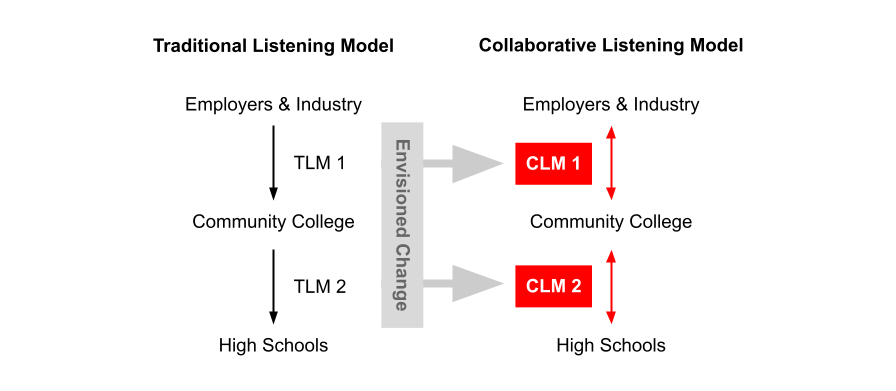Envisioned change of workforce listening models

When analyzing qualitative data, I often build visual models to understand the phenomena collected in the data set. In this example, I am trying to clarify how the data defines an envisioned change in the way listening happens in workforce education. I am using basic tags to show where change happens in a listening model (LM): from Traditional (TLM) to Collaborative (CLM).
The dominant (and thereby "traditional") listening model is unidirectional.
TLM 1 - Industry and employers articulate to the community college programs what skills, knowledge, and competencies employers expect their workers to have. College programs use that input to structure curricula and assess students.
TLM 2 - Community college programs articulate to the high schools what standards and conditions they expect in order to set-up articulated programs. High schools use that input to offer dual credit and running start programs.
This model appears to be breaking down under the weight of the pandemic. Emerging from several workforce-related projects, the envisioned model is more collaborative, anticipatory, and multidirectional.
CLM 1 - In addition to understanding what industry partners seek in terms of workforce competencies, community college programs also help employers review current structures and conditions of their workforce, anticipate the future, and build new workforce strategies that intersect with what workers want:
- fair compensation,
- safe and respectful work conditions,
- a sense of meaning and worth, and
- opportunity for growth and hope.
CLM 2 - With their high school partners, community college programs have expanded opportunities to discuss, share, and explore:
- effective curricula and instructional techniques,
- meaningful bridges for high school graduates to become college students, and
- anticipate how their combined educational effort is connected to the region's workforce, economy, and community.